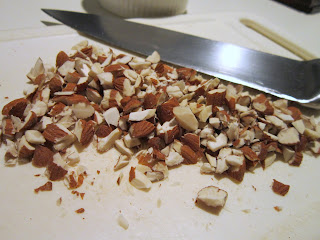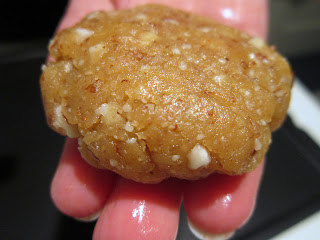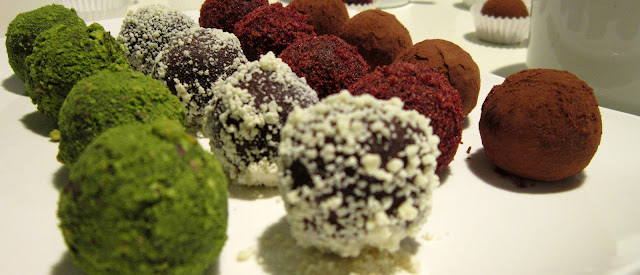We all know those things you get as
Christmas gifts that you don't really want or need. Then they just
sit in some corner and collect dust while you wonder how to get rid
of that ugly vase without your aunt noticing or whether you'll ever
use all the fourteen pairs of sock with a deer pattern that you own
by now. That's why I always liked both giving and recieving edible
gifts. And if you tell me you don't really want or need these
luscious chocolate truffles, I just have one thing to say to you:
have you seen them?
To make 40 to 50 truffles you will
need:
450 g dark chocolate (about 70% cocoa
solids)
250 ml whipping cream
pinch of salt
vanila extract
cocoa powder
white chocolate
dried cranberries
pecans
pistachios
wheatgrass powder
Make the ganache:
Break chocolate into small pieces or
chop it with a knife (even better) and put in in a heatproof bowl.
Pour the cream into a pot and heat it
with the vanilla untill it just starts to simmer. Then pour it over
the chocolate, add a pinch of salt and let it sit for around ten
minutes. If you want to add something else, like a splash of
champagne or peppermint extract, now is a good time to do it.
After the ten minutes, you can start to
stir it with a whisk or spatula until you get a smooth ganache.
Take a square or rectangular cake mold
(not too big or the truffles will be too flat), line it with plastic
wrap and fill it with the ganache. Fold the sides of the plastic wrap
over the ganache so it's sealed, then put it in the fridge for about
an hour.
Prepare the toppings:
Finely chop the cranberries, then put
them in the oven and let them dry at 90°C for around 30 minutes.
Keep an eye on them so they dont get burnt. Let them cool, then grind
them into a fine powder.
Grind the pistachios, then separate
them into two halves and add half a teaspoon of wheatgrass powder to
one half to get a more vivid green colour. My pistachios were already
roasted so they had were yellow when ground, but if you use fresh
ones, you'll get a green powder without using wheatgrass.
Grind the white chocolate and pecans,
too.
Top (left to right): pistachios with wheatgrass powder, pecans, pistachios, cranberries
Bottom: white chocolate, cocoa powder
Note: when choosing the toppings, note
that some things tend to stick to the truffles better then others.
Cocoa powder does the job superbly, while pecans were quite a pain in
the butt to work with. I have to say I was also impressed with the
cranberry powder – it's easy to work with and I love the taste and
colour.
Make the truffles:
Now it's time to get your hands dirty,
so get the ganache out of the fridge, unwrap it and place it on a
cutting board.
If you own one of those small scoops,
you can make ball shaped truffles. The scoop will give them a sort
of round shape, but to get them perfectly round, you'll need to
use your hands to roll them. I actually suggest using latex gloves to
do this, because chocolate won't stick to them as much as it would to
your skin and it will make the process much less messy.
By far the easiest and quickest shape
to do, however, is cubes. They require no special equipement, as a
knife is all you need. Get a glass of hot water and a paper towel, so
you can keep your knife hot (and dry!). Before you start cutting the
ganache into cubes, smoothen the top of the ganache with the knife
and make sure the sides are even, too.
Cover the truffles in your toppings and
voilà - you are now ready to impress your friends and family with
these homemade beauties.
Use as holiday gifts or serve as after
dinner treats.




















































